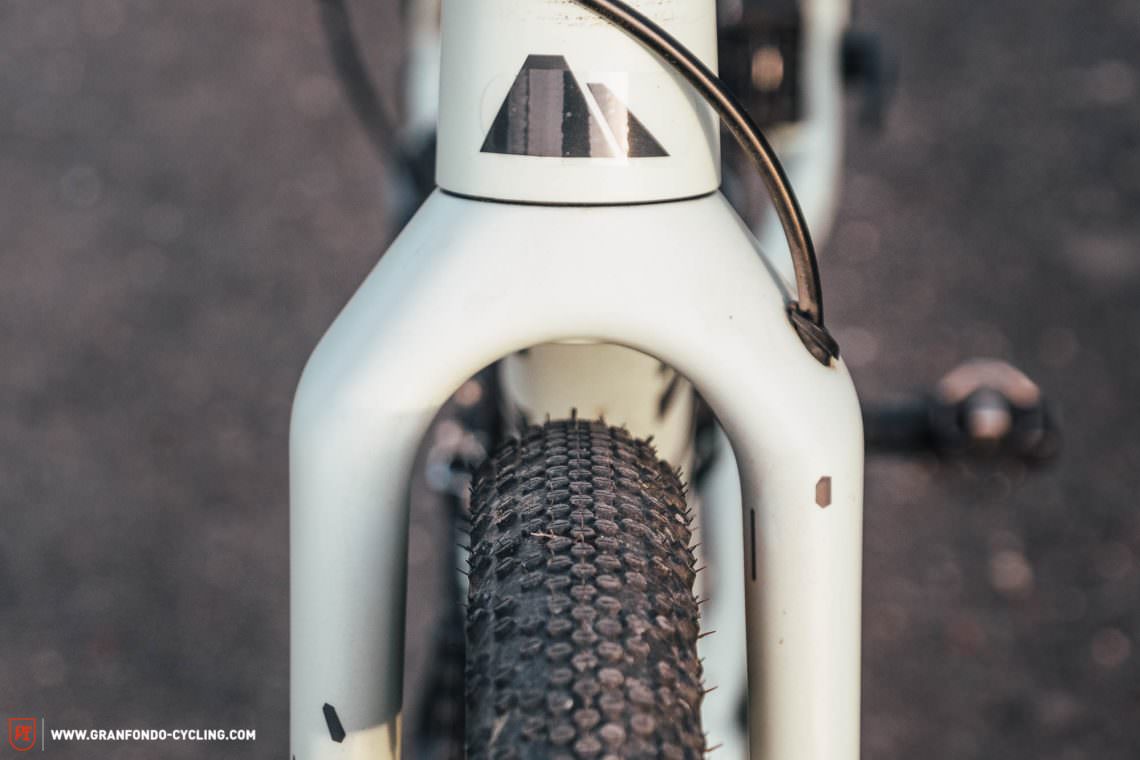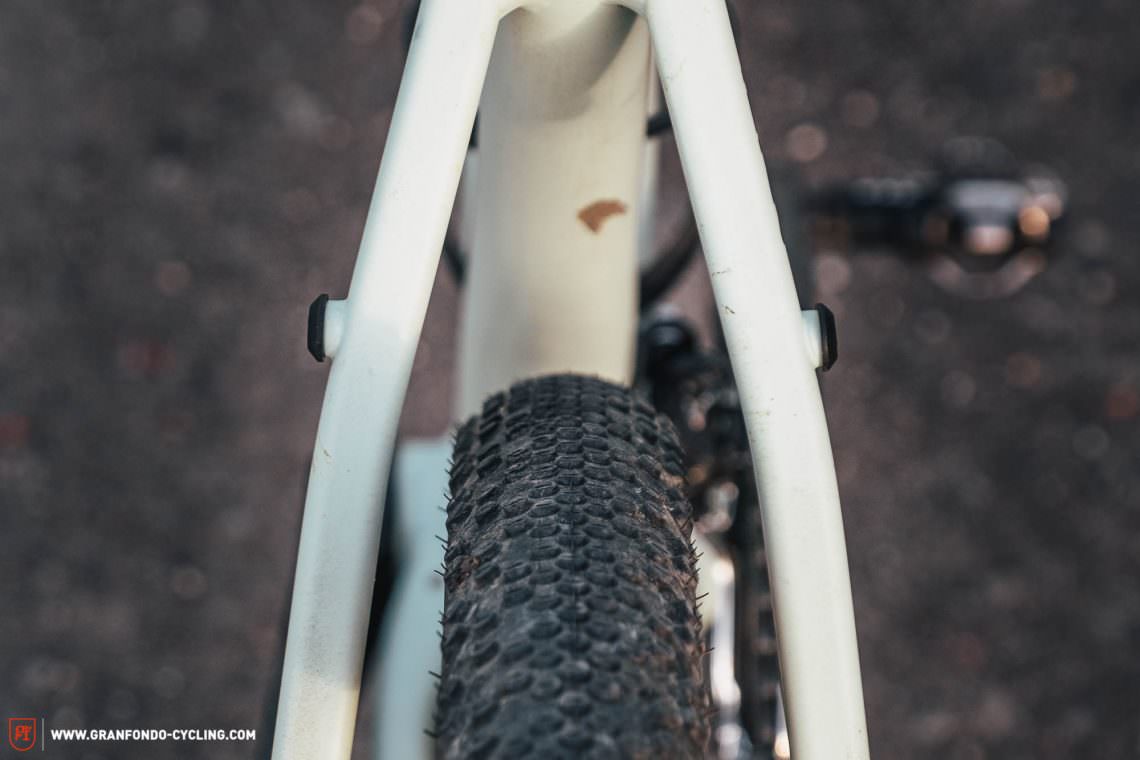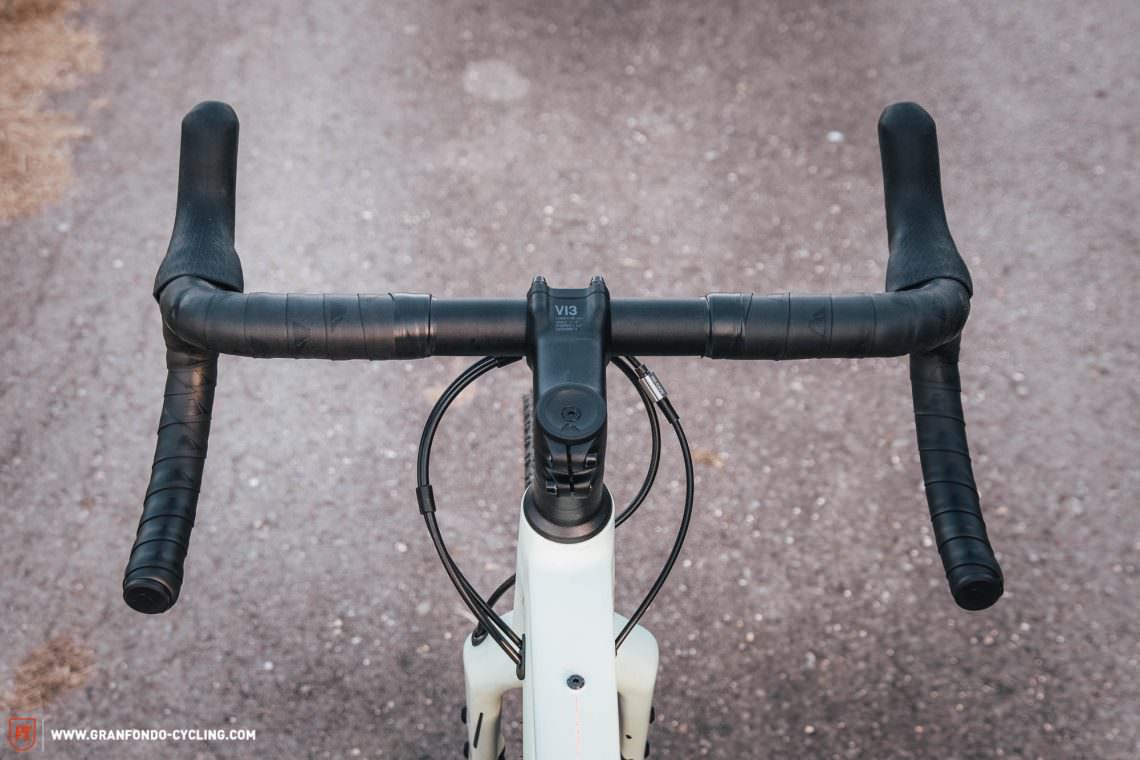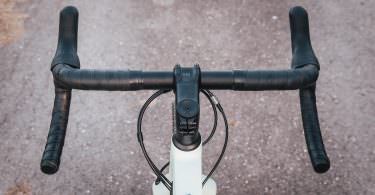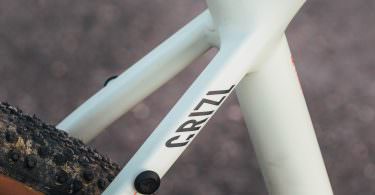Maximum performance in demanding terrain and versatility for all gravel adventures off the beaten track – Canyon’s promise for the Grizl CF SL and SLX gravel bikes should apply equally to the brand new aluminium version. What distinguishes the bike from its carbon sibling and how does it ride? Read on to find out!
Gravel is what you make it! It’s a type of cycling that isn’t yet subject to the regulations of the UCI. Therefore, bikes of this category are often banned from taking part in official races. Fortunately, most of you don’t care either. The general public doesn’t need a race weapon for maximum performance. Instead, what you need is a reliable partner to pursue your personal idea of gravel riding. It’s typically not a question of minimum weight and maximum performance of the specced components, but rather the versatility that a bike offers thanks to numerous luggage mounting points, wide tire clearance and a good level of durability.

As our review of the carbon Canyon Grizl CF SL 8 1BY (review here) has already shown, the Grizl does cater to this versatility, making it a sound basis for the many different pursuits of gravel riding. To appeal to a broader group of buyers with this platform, Canyon now present a more affordable entry-level version made of aluminium, the Canyon Grizl AL. We’ve already put the bike to the test and compared it to its big carbon brother. How does the aluminium Grizl ride? Read on to find out!
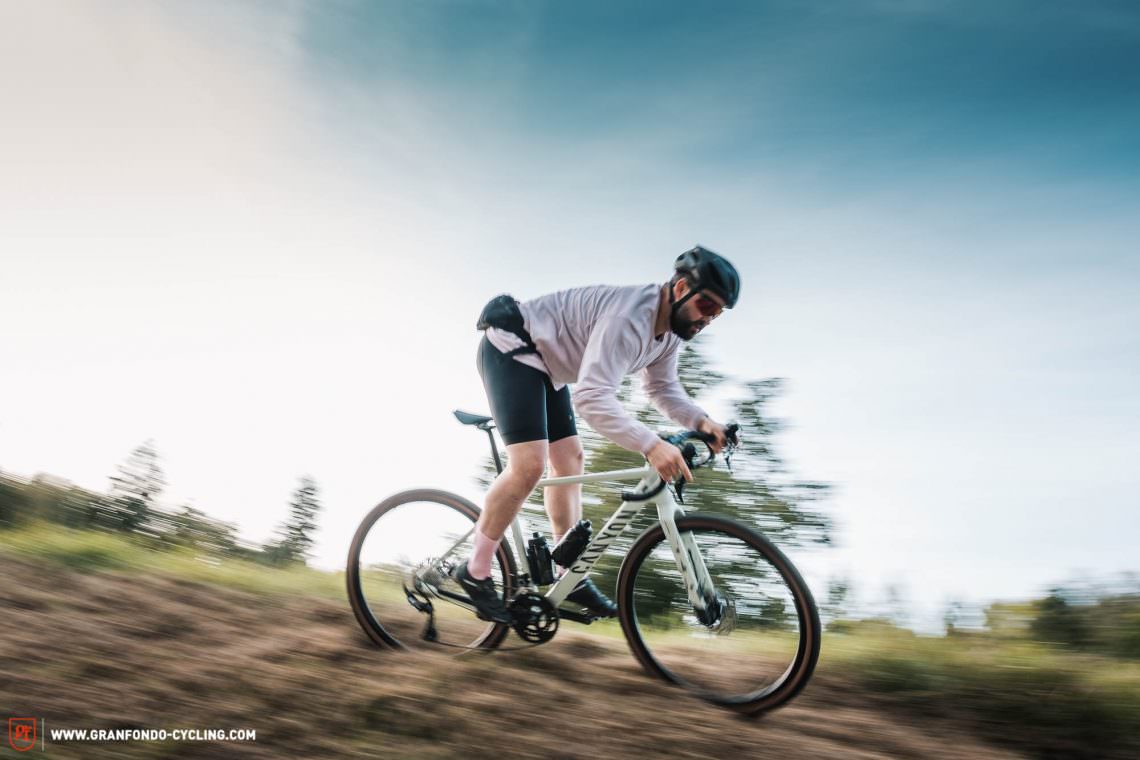
Grizlin’ is just like riding, but with your priorities set right. Experience over performance. Grizlin’ means rolling out the door with an open mind, not knowing quite what’s going to happen. – Canyon
The Canyon Grizl AL in detail
If you view the Grizl AL from a distance, it’s difficult to distinguish from its carbon counterpart. The frame shape is essentially the same, so the bike is unmistakably a Canyon. The weld seams around the head tube and at the point where the seat stays and top tube meet the seat tube have been sanded down, so you have to get very close to recognise that you’re dealing with an aluminium frame when looking here. That said, the weld seams on the rear end and bottom bracket of the Grizl AL are clearly visible, and the seat post clamp isn’t integrated, unlike the carbon version. Like the carbon version, the looks of the aluminium Grizl are discreet and understated. Thanks to the clean design and proportional shapes, it’s an appealing bike nonetheless.
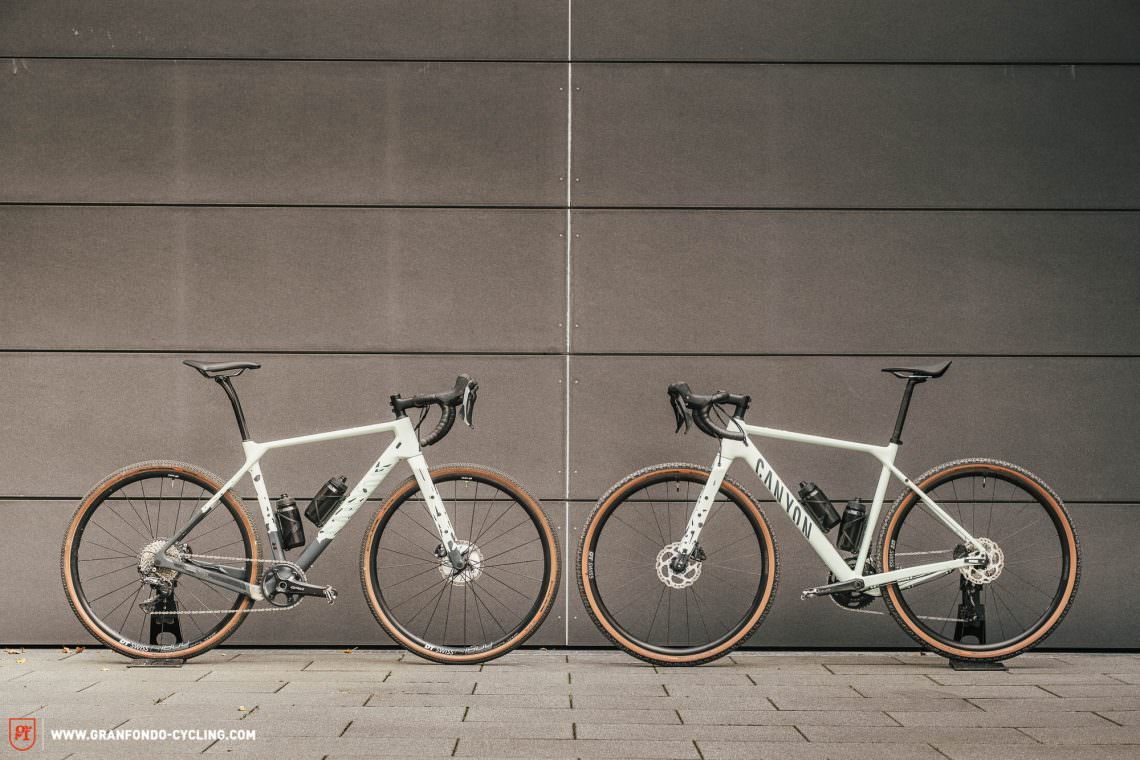
The wow effects of the Grizl AL only reveal themselves upon closer inspection, hidden in the frame and paintwork as on the carbon version. On the inside of the chainstays and the fork, you’ll find mounting points for the mudguards that Canyon developed for the Grail:ON in cooperation with Curana. They’re available for 650B and 700C tires. However, they limit the maximum tire width to 45 mm. Without mudguards, the Grizl AL can accommodate up to 50 mm wide tires in both 650B and 700C. The drive-side chainstay is dropped and made very slim to offer increased tire clearance and allow for the option of 2x drivetrains with larger chainrings.
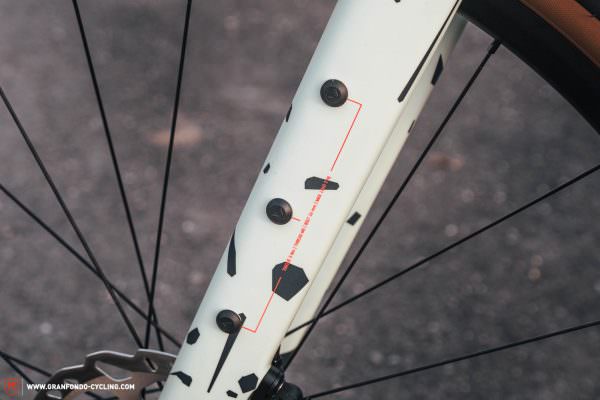
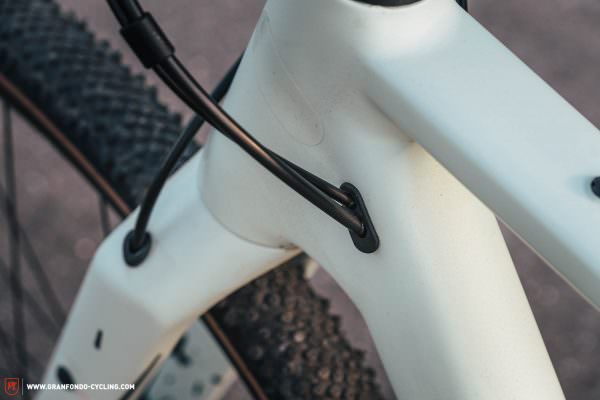
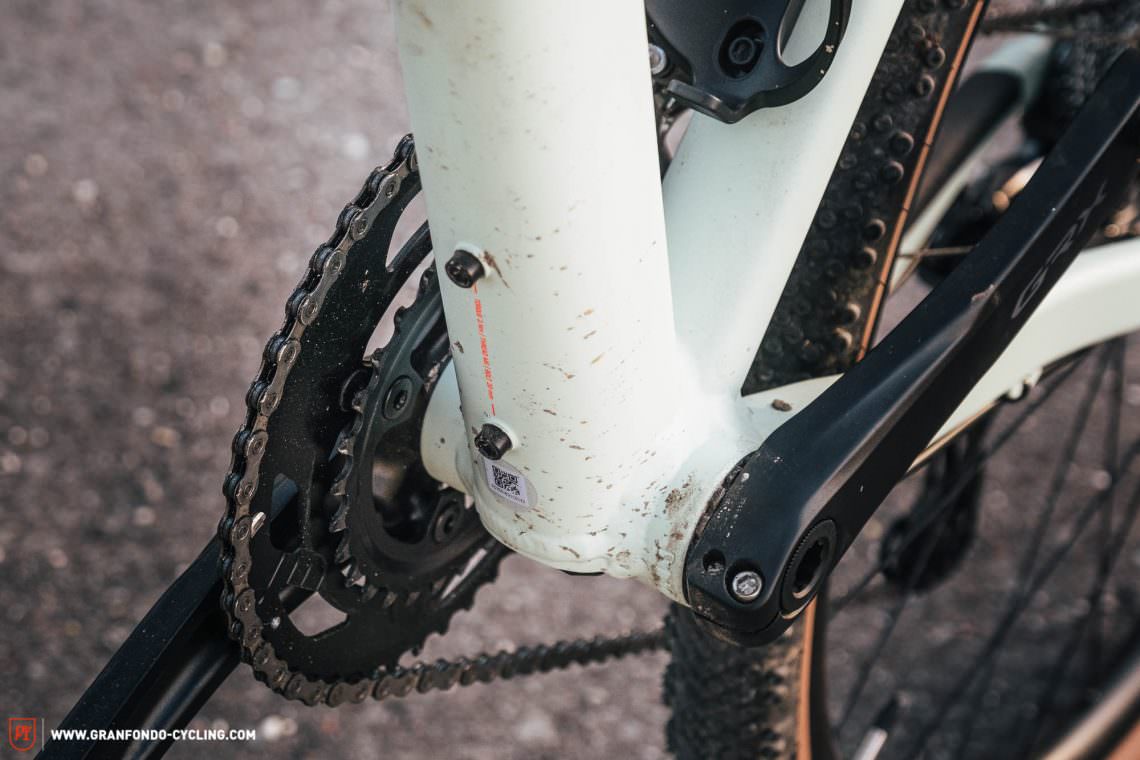
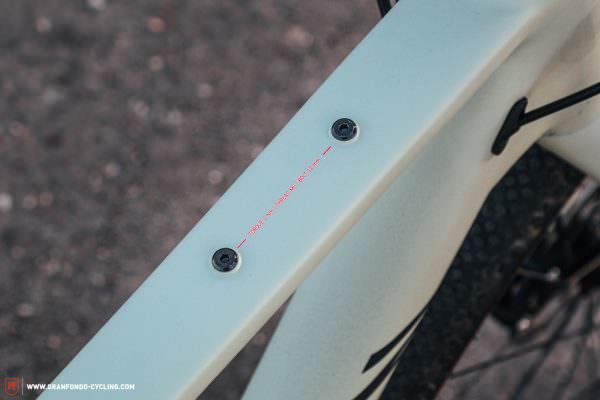
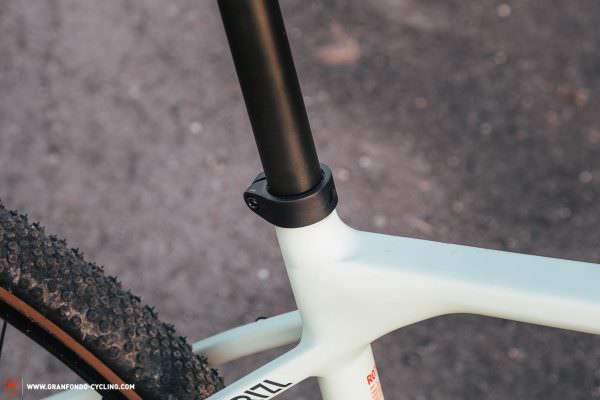
For bikepacking adventures, the Grizl AL offers numerous additional luggage attachment points. In addition to the standard bottle cage bosses in the front triangle, you’ll also find them under the down tube and on both sides of the fork, each of which can carry a maximum of 3 kg, as well as a set on the top tube. For additional luggage, you can also fit a rack to the rear of the Grizl AL. So, no matter what you’ve got planned, the Grizl AL isn’t short of mounting points. We were particularly impressed with the fine lettering on the frame with which Canyon indicate the recommended torque settings of the individual bosses. It also specifies which bolt you need for which hole in case you ever have to buy replacements – life can be so easy! However, the aluminium Grizl doesn’t only score where the carbon version does; we must also criticise the external cable routing at the front. Though we don’t need internal cable routing on a gravel bike for aerodynamic reasons, it would make attaching a handlebar bag for bikepacking trips that much easier.

Our assessment of the Grizl AL is the same as the carbon version: with its wealth of mounting points, eyelets for mudguards, stealth cable routing for a dropper post, the option of fitting a suspension fork such as the RockShox Rudy XPLR (review here) and the conventional stem and handlebar combination, the frame of the Grizl AL is highly versatile. If you treat yourself to a second, more asphalt-oriented wheelset, you will have a bike that can do almost anything.
The components of the Canyon Grizl AL
The Canyon Grizl AL is available in three builds. All three rely on Shimano’s mechanical 2x drivetrain consisting of a 46/30 t chainset up front and an 11–34 t cassette at the rear. The shifting and braking components of the aluminium models are on par with their respective carbon counterparts. The Grizl AL 6 comes equipped with a Shimano GRX 400 groupset, while the Grizl AL 7 features a Shimano GRX 600/810 groupset.

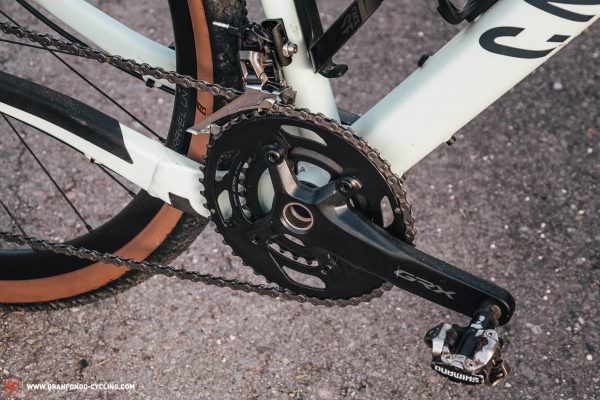
The latter also applies to the Grizl AL 7 Suspension, which comes factory-fitted with a RockShox Rudy XPLR suspension fork, offering a maximum of 30 mm travel. You will get the same carbon fork as the flagship carbon models if you decide on a Grizl AL model with a rigid fork. As such, you also have the option of replacing the standard 160 mm brake rotor with a 180 mm version, giving you improved braking power and reliability. Compared to the respective carbon counterparts, the aluminium versions also rely on the same tires (Schwalbe G-One Bite TLE), cockpit (Canyon HB50 Gravel AL handlebar and Canyon V13 stem) and seat post (Canyon SP57 VCLS).

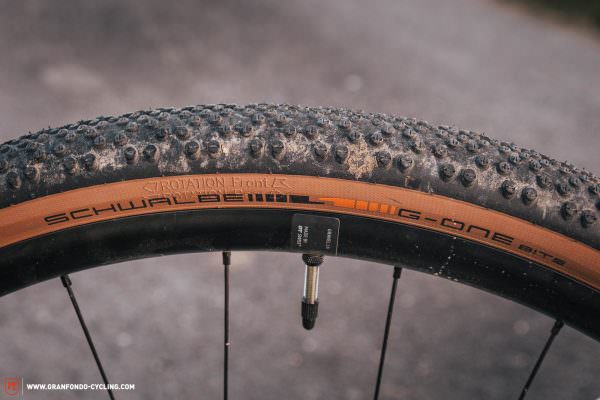
The differences between the Canyon Grizl AL 6 and Grizl CF SL 6 and the Grizl AL 7 and Grizl CF SL 7 are limited to the aluminium frame and the wheels. Instead of the DT Swiss C 1850 SPLINE DB 23 wheels, the aluminium models roll on DT Swiss Gravel LN wheels. These feature an equally generous internal rim width and provide a good basis for high-volume gravel tires. All Grizl variants come fitted with 45 mm wide Schwalbe G-One Bite TLE Evo tires as standard, shipped with a tube though they’re tubeless-ready. The tires are wider than those on the Canyon Grail and should provide added traction and cushioning off-road. The entry into the Grizl world is now presented by the Canyon Grizl AL 6, which, at € 1,499, is exactly € 500 less than its carbon counterpart, the € 1,999 Grizl CF SL 6. The Canyon Grizl AL 7 Suspension costs € 1,999. In between these two, you’ll find our € 1,799 Canyon Grizl AL 7 test bike, which is also € 500 less than the carbon version and weighs 10.7 kg in size M.
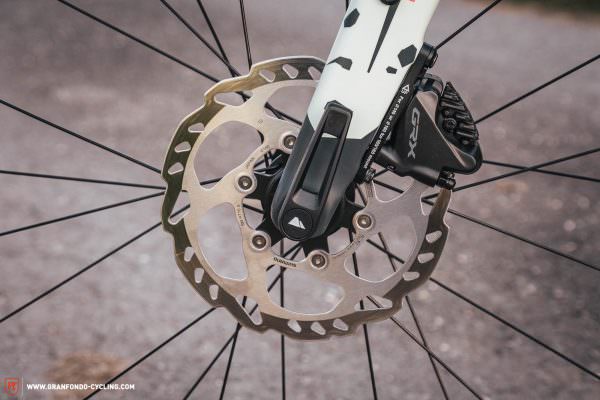

The geometry of the Canyon Grizl AL
The Canyon Grizl AL has the same gravel geometry as the Canyon Grail and the carbon version of the Grizl. The comparatively long wheelbase is said to make room for the voluminous tires of the Grizl while ensuring stable handling. To keep the handling responsive, Canyon also spec the Grizl AL with a relatively short 70 mm V13 stem (size M). The stack and reach of the Grizl AL are also identical to those of the Grail and the Grizl CF SL and SLX models. The stack to reach ratio is between that of the Canyon Ultimate and the Canyon Endurace. As a result, the riding position is more relaxed than on the Ultimate but a little more aggressive than on the Endurace. The bike’s geometry promises good-natured handling in technical terrain without feeling sluggish on asphalt.
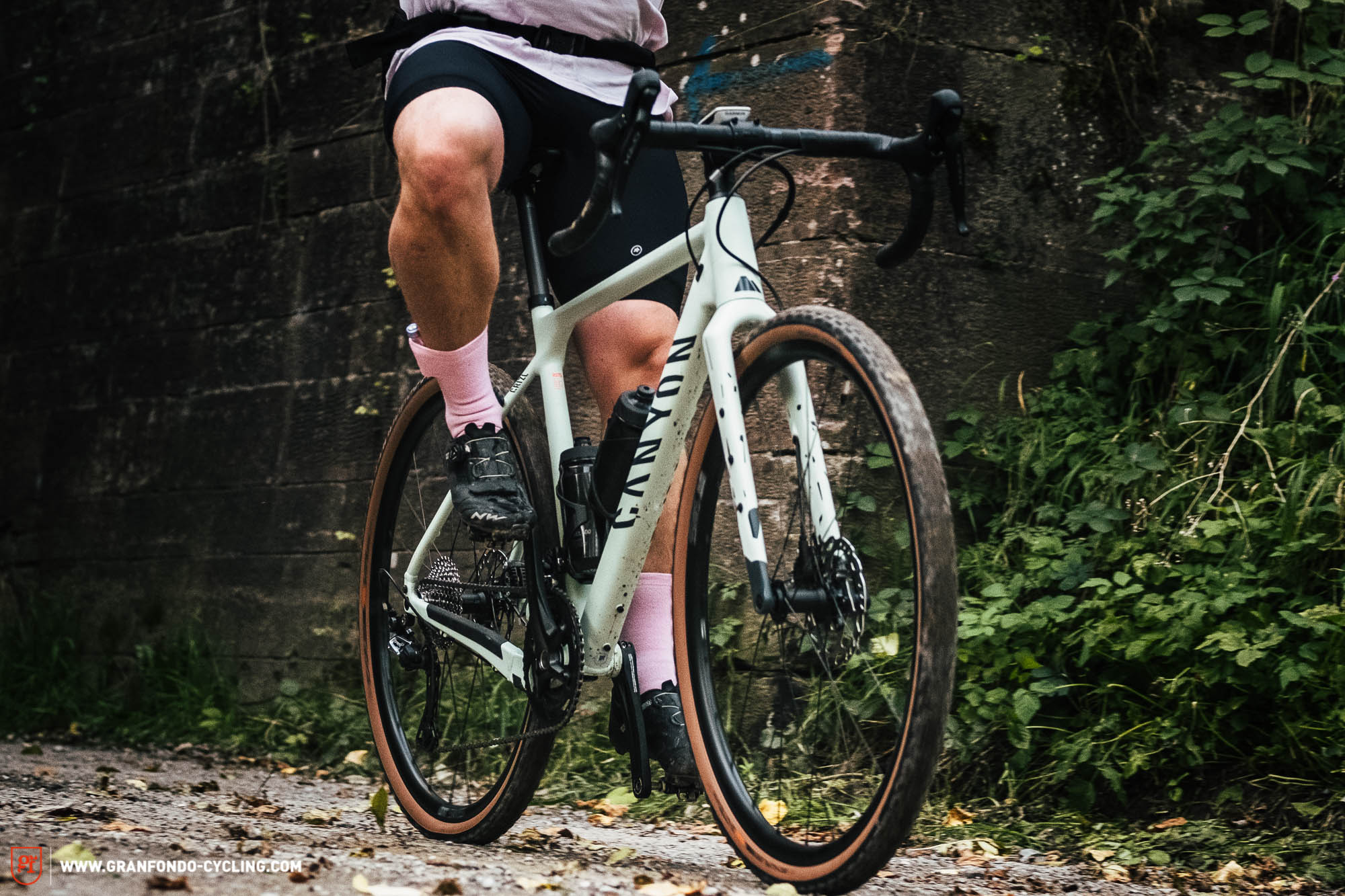


The Canyon HB50 handlebar on the Grizl is 440 mm wide with an 8-degree flare in the drops. You might want a wider model to accommodate a large handlebar bag or more flare for increased control in rough terrain. Fortunately, since the Grizl relies on a conventional stem and handlebar combination instead of an integrated cockpit like the Grail CF, you can easily upgrade the handlebar to suit your preferences. Our test rider is 184 cm tall and felt comfortable aboard the size M. The 3XS frame size is new to the Grizl AL, which should accommodate an even wider range of riders. We will add the exact geometry specs of this frame size to the table below as soon as possible.
| Size | 2XS | XS | S | M | L | XL | 2XL |
|---|---|---|---|---|---|---|---|
| Seat tube | 432 mm | 462 mm | 492 mm | 522 mm | 552 mm | 582 mm | 612 mm |
| Top tube | 532 mm | 541 mm | 562 mm | 574 mm | 588 mm | 612 mm | 627 mm |
| Head tube | 121 mm | 133 mm | 118 mm | 138 mm | 164 mm | 185 mm | 204 mm |
| Head angle | 70° | 71° | 71° | 72.25° | 72.5° | 72.75° | 72.75° |
| Seat angle | 73.5° | 73.5° | 73.5° | 73.5° | 73.5° | 73.5° | 73.5° |
| Chain stay | 420 mm | 420 mm | 435 mm | 435 mm | 435 mm | 435 mm | 435 mm |
| Wheelbase | 1,007 mm | 1,007 mm | 1,036 mm | 1,037 mm | 1,050 mm | 1,072 mm | 1,086 mm |
| Reach | 377 mm | 382 mm | 397 mm | 402 mm | 409 mm | 427 mm | 436 mm |
| Stack | 522 mm | 537 mm | 556 mm | 579 mm | 605 mm | 626 mm | 644 mm |
| Stem | 70 mm | 70 mm | 70 mm | 80 mm | 90 mm | 90 mm | 100 mm |
| Bar | 400 mm | 400 mm | 420 mm | 440 mm | 440 mm | 460 mm | 460 mm |
| Crank | 170 mm | 170 mm | 172.5 mm | 172.5 mm | 172.5 mm | 175 mm | 175 mm |
| Wheel size | 650B | 650B | 700C | 700C | 700C | 700C | 700C |
Riding the new Canyon Grizl AL 7
As expected, you’ll know within the first few metres aboard the Canyon Grizl AL 7 that you’re riding a Grizl. This is due to the fact that the handling largely corresponds to that of the carbon Grizl. The bike invites a leisurely pace on asphalt, allowing you to head towards the nearest gravel road with balanced, composed and intuitive handling. Thanks to the 45 mm wide Schwalbe tires, the bike reliably dampens vibrations and minor impacts. However, bigger hits quickly make clear that the aluminium frame combined with the Canyon SP57 VCLS seat post can’t offer the same level of rear-end compliance as the carbon models with the two-part Canyon S15 VCLS 2.0 seat post. Together with the increased weight of the Grizl AL, this restricts the bike’s versatility to some degree when compared to the Grizl CF SL and SLX. The bike’s sweet spot can be found somewhere between poorly maintained asphalt, compacted gravel highways and smooth flow trails without jumps.
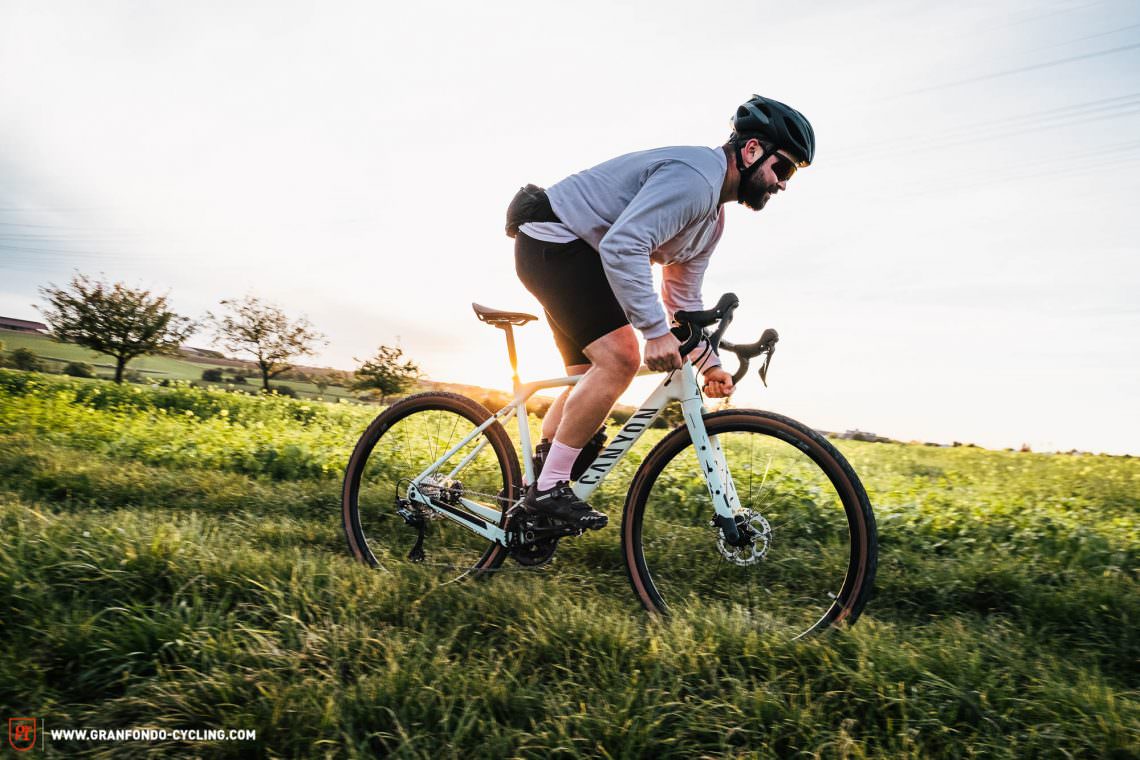
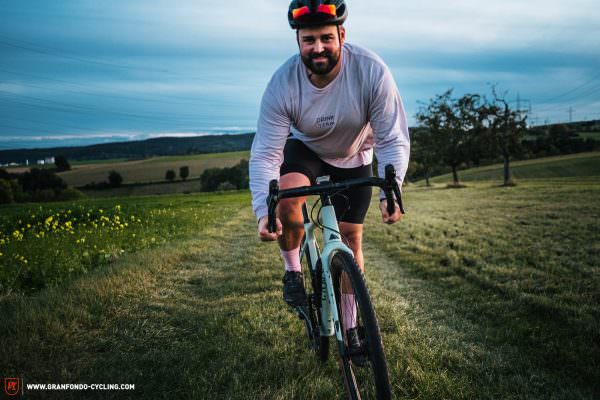

If you want to venture into rougher terrain, you will soon find yourself under-biking, i.e. (deliberately) in a situation that most would consider too demanding for the chosen bike. Doing so requires a certain level of skill and, if necessary, you should opt for the Grizl AL 7 Suspension featuring a suspension fork and possibly upgrade the rigid seat post to a dropper post. Conversely, the Canyon Grizl AL will appeal to many who prefer over-biking, i.e. riding a bike in less demanding surroundings than it was designed for, such as a gravel bike on asphalt roads, for the added sense of safety this gives you.
When riding in the sweet spot of the Grizl AL, the bike’s steering feels pleasant and responsive, like the carbon Grizl. The slight shortfall of agility and precision is due to the higher weight and voluminous tires. Above all, the added weight also means that the aluminium version feels a bit more sedate when accelerating and climbing. However, once you’ve brought the bike up to speed on flat terrain and descents, it maintains its momentum with efficiency. Although the Schwalbe tires increase rolling resistance significantly on asphalt, they offer plenty of traction and cornering reserves on loose surfaces.
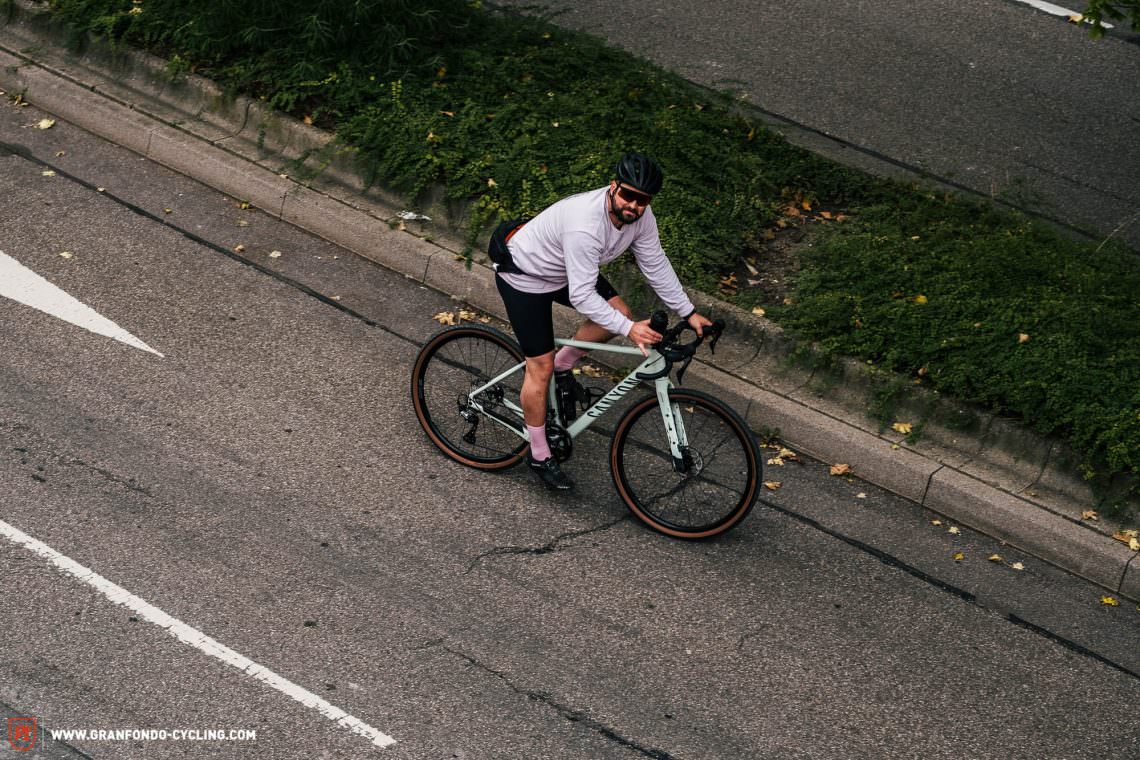
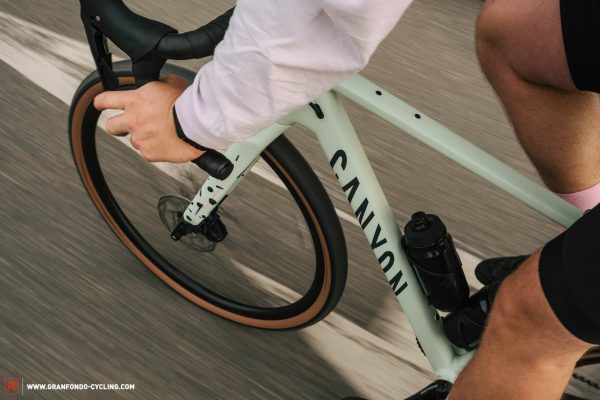

The gear range of the 2x drivetrain consisting of a 46/30 t chainset and an 11–34 t cassette, as featured on all the Grizl AL models, is significantly wider in both directions than the carbon models with their 11–42 t 1x drivetrains and 40 t chainring. As such, you can stay on the pedals for longer on fast descents and have additional reserves on long, steep climbs or when hauling your luggage uphill. However, this comes with the disadvantage of the second chainring up front, which requires a derailleur and makes choosing the right gear slightly more complex. Additionally, the second chainring and derailleur don’t just add weight but also increase maintenance, allow dirt to collect in difficult to reach places and detract from the bike’s clean look. That said, the Shimano GRX groupset is the perfect choice for the Canyon Grizl. It shifts quickly and precisely and continues doing so even when covered in dirt and grime. The 160 mm rotors provide the necessary stopping power to always stay in control, even on fast descents. In addition to the predictable and intuitive handling, this contributes to the high level of confidence you’ll feel aboard the Grizl.
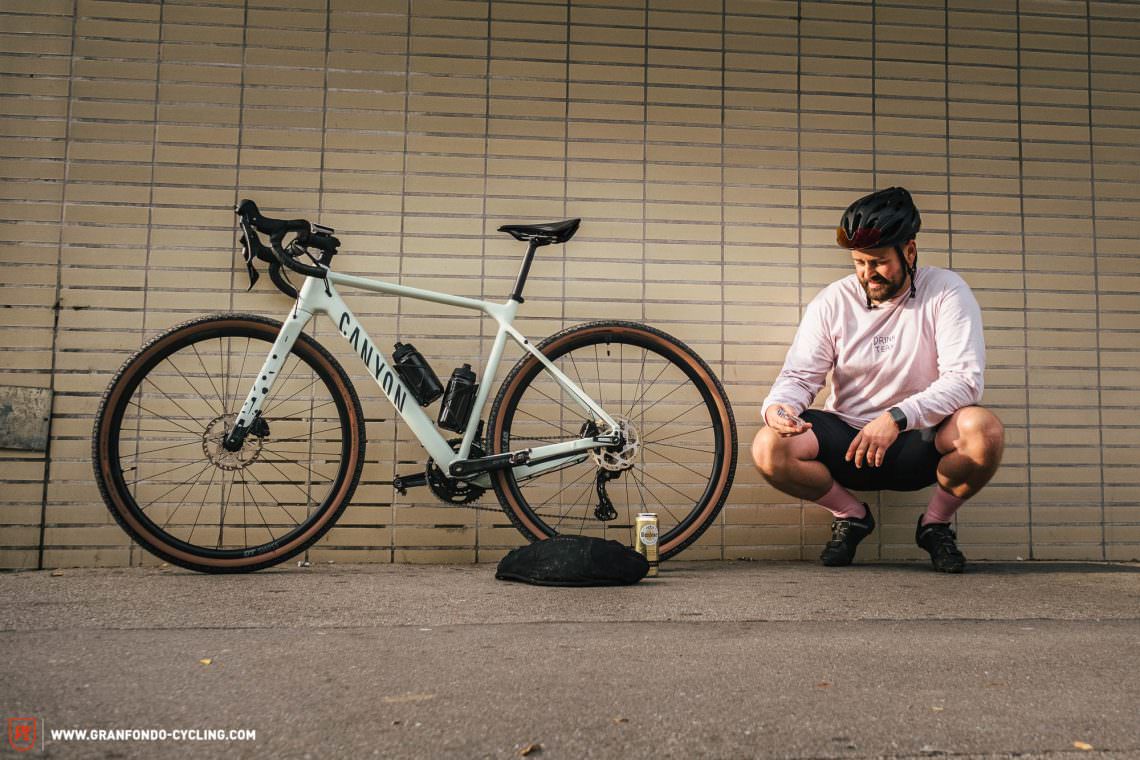


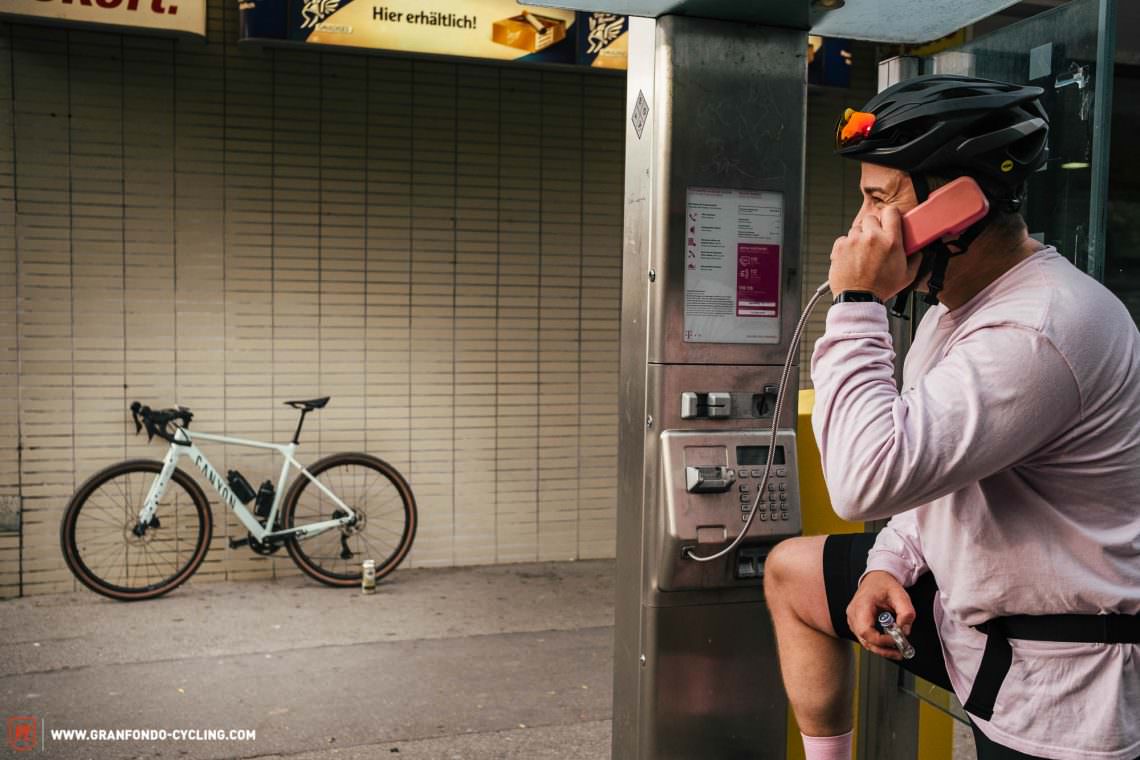
For beginners, those who prefer a relaxed riding style and those who have felt left out, the handling of the Grizl is balanced and intuitive, offering plenty of stability and control! It doesn’t accelerate as willingly, is slower on the climbs and the lack of compliance at the rear means it isn’t as capable. Nevertheless, its all-round gravel properties are good, and it offers everything that gravel and bikepacking beginners need, thanks to a multitude of luggage attachment points.
Conclusion
With the Canyon Grizl AL, the German brand present a sensible addition to the lower end of the Grizl portfolio. If you ride between broken asphalt and easy flow trails and don’t demand peak performance, this bike offers intuitive handling, solid components and lots of customisation options at a great price. We’d recommend running a suspension fork and dropper post on the Grizl AL if you’re out and about in rougher terrain.
Tops
- generous tire clearance up to 700 x 50C
- numerous mounting points
- good spec at a great price
- intuitive and good-natured handling
Flops
- quite heavy
- lack of cable integration at the front
- minimal flare on the handlebars
- limited off-road capabilities
For more information, visit canyon.com

Did you enjoy this article? If so, we would be stoked if you decide to support us with a monthly contribution. By becoming a supporter of GRAN FONDO, you will help secure a sustainable future for high-quality cycling journalism. Click here to learn more.
Words: Photos: Robin Schmitt


